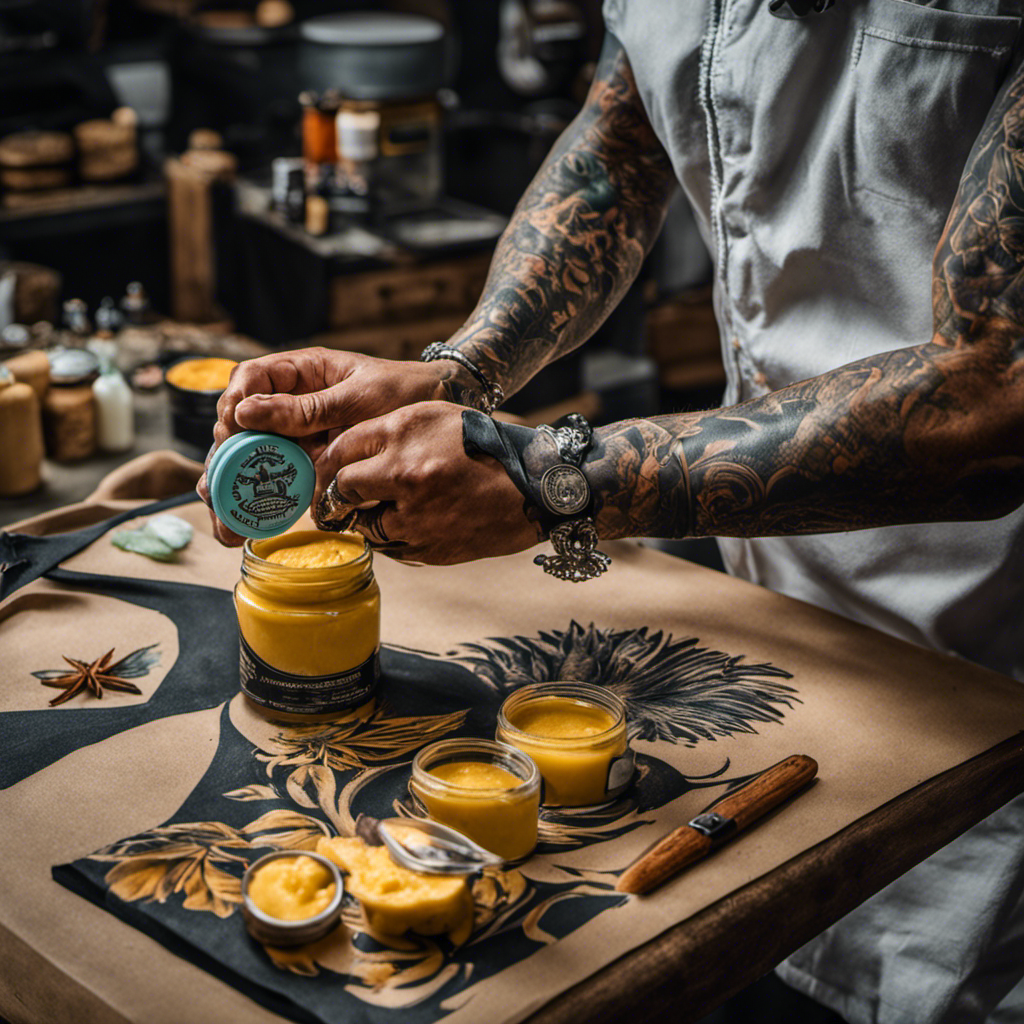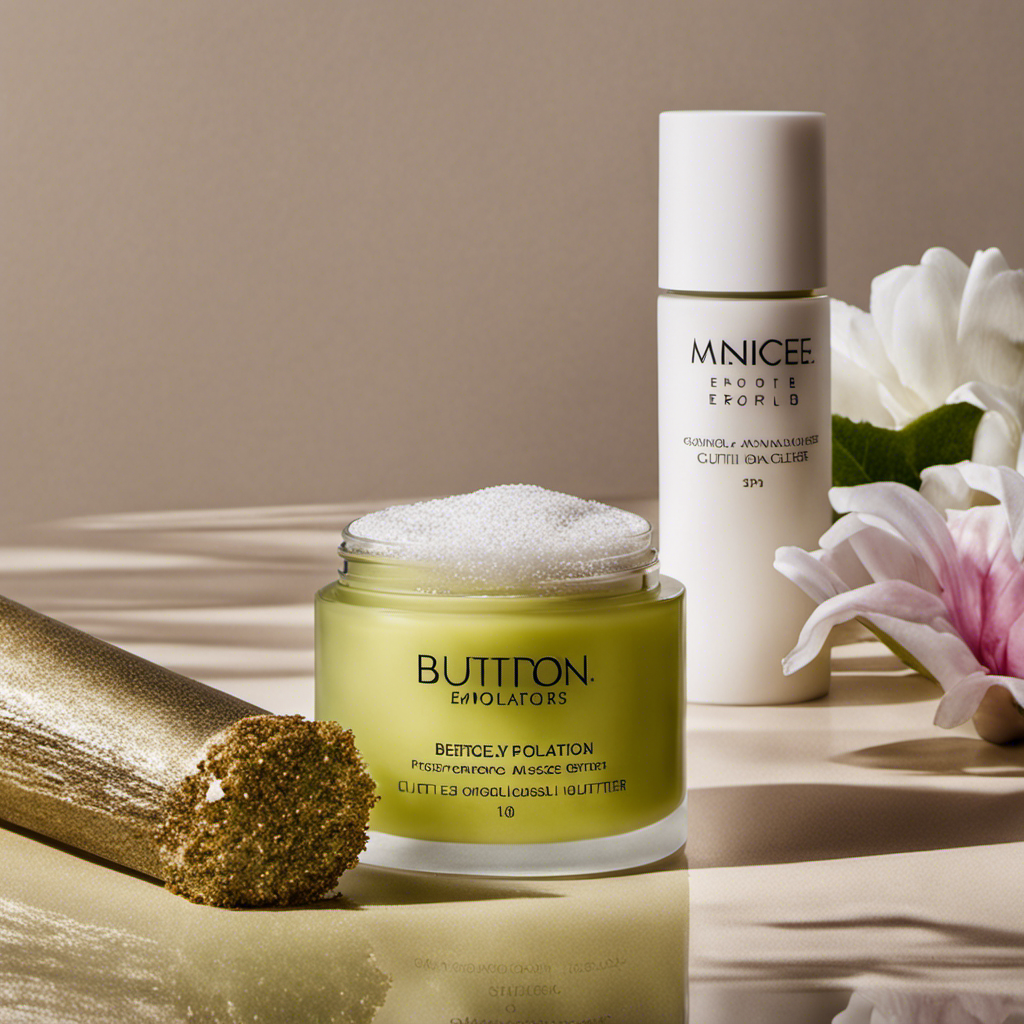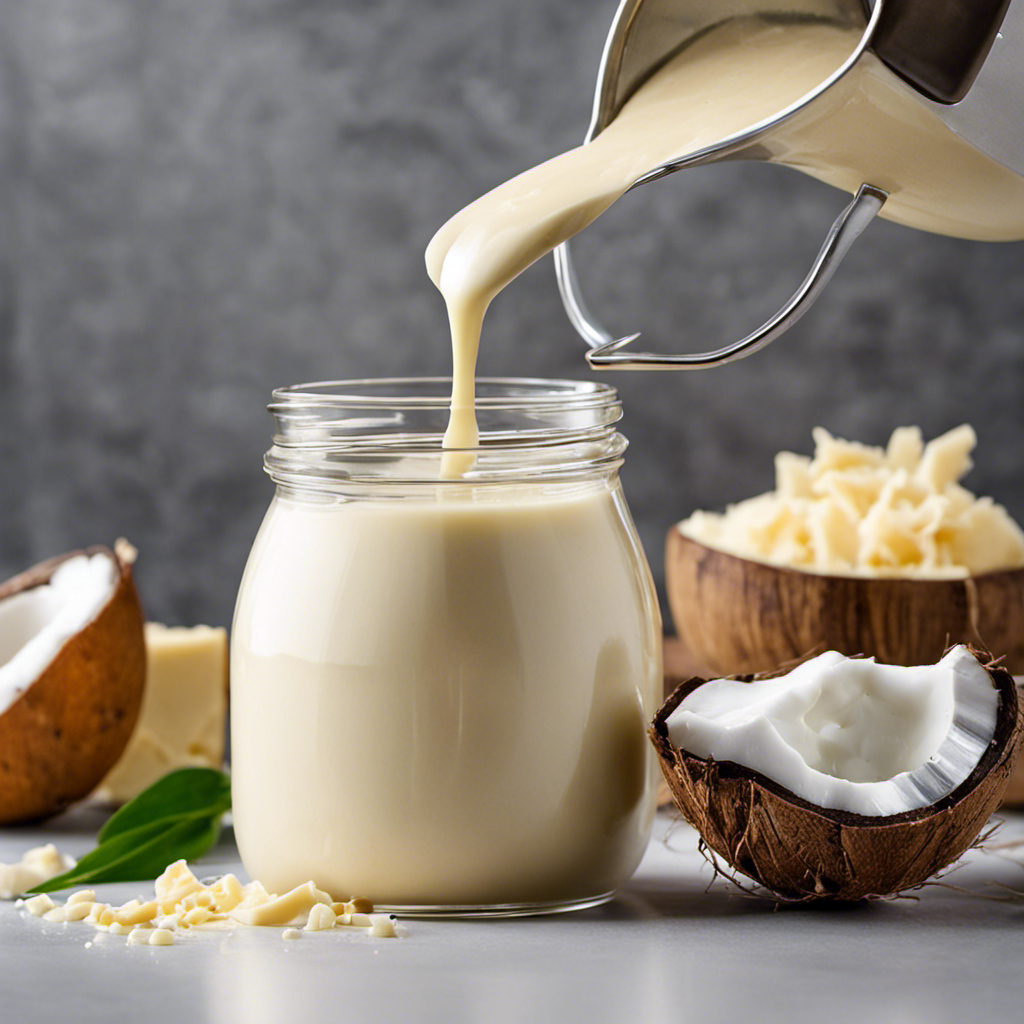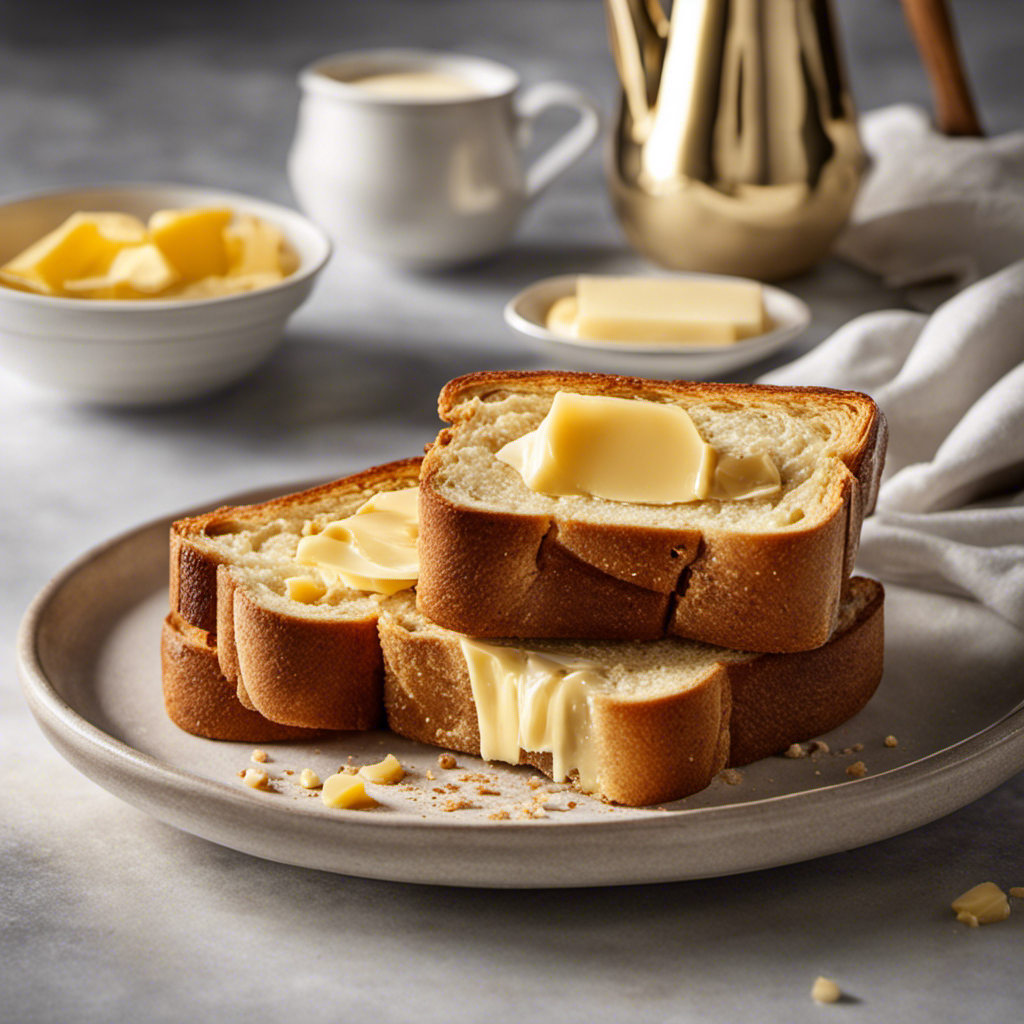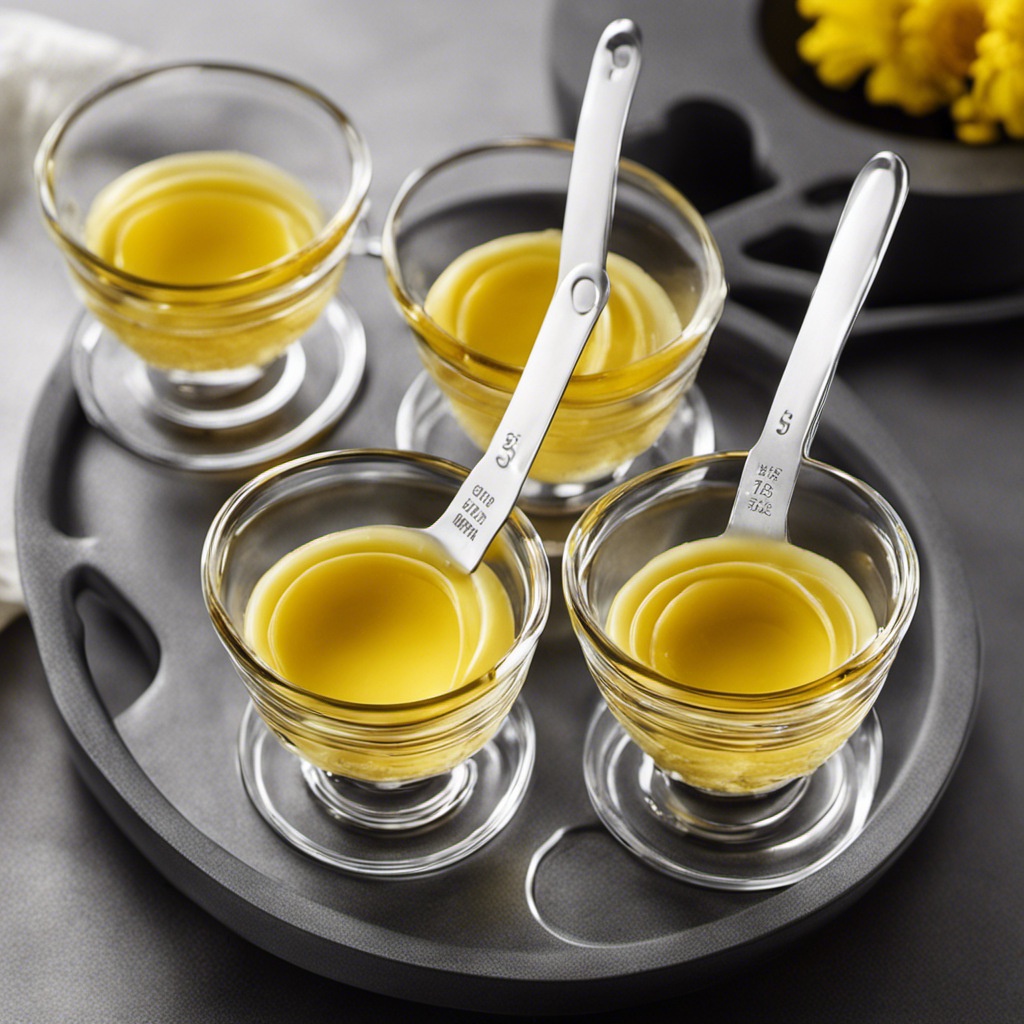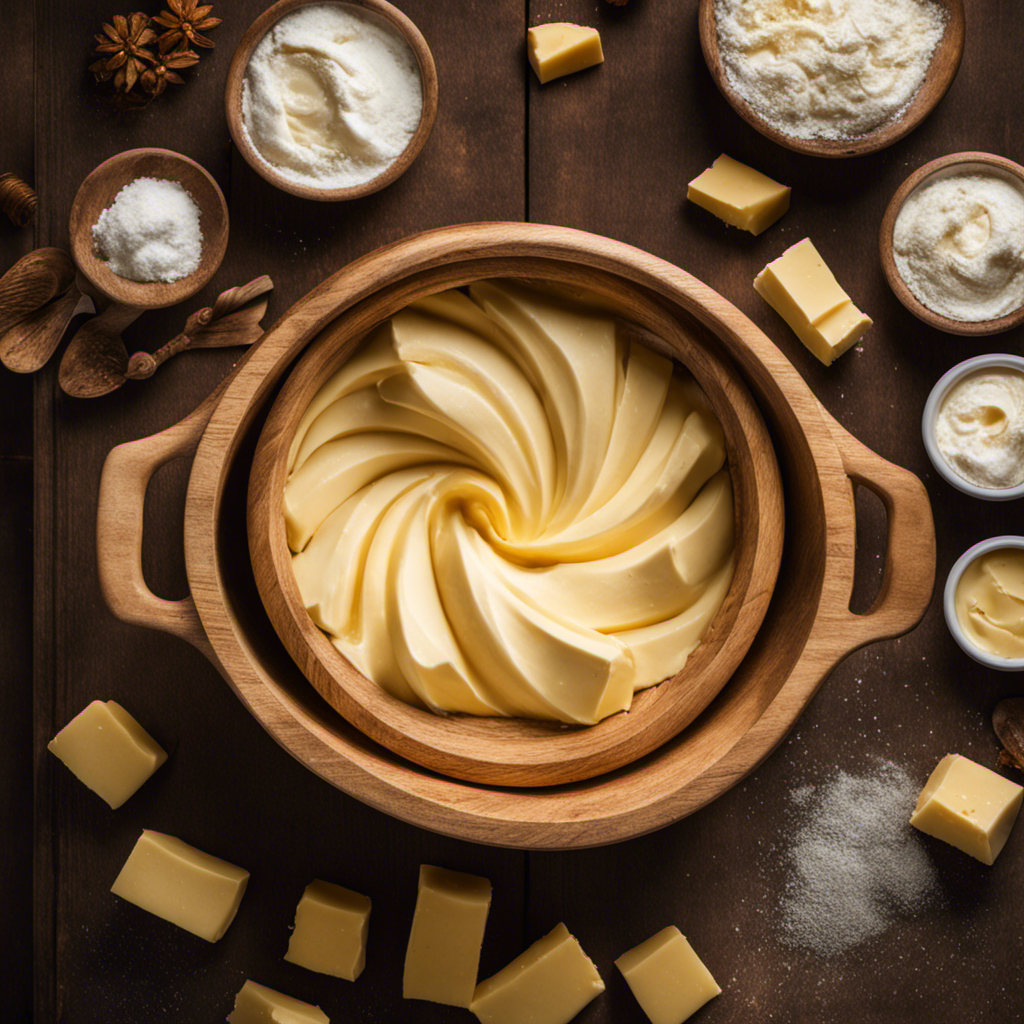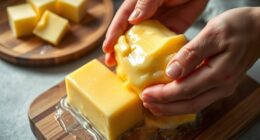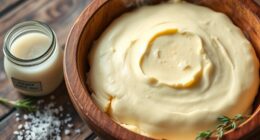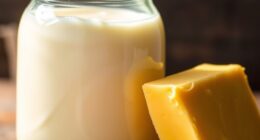I found a revolutionary product that has completely changed how I take care of my tattoos and piercings: Hustle Butter.
This multi-purpose balm not only nourishes and moisturizes my skin, but it also helps to heal and protect my new body art.
In this article, I’ll share the benefits of using Hustle Butter, along with step-by-step instructions on how to properly apply it for optimal results.
Get ready to level up your skincare routine and experience the magic of Hustle Butter.
Key Takeaways
- Hustle Butter can be used for tattoo aftercare and general skincare, as it moisturizes and soothes the skin.
- It is made with nourishing ingredients like shea butter and coconut oil, which hydrate and nourish the skin.
- Hustle Butter reduces inflammation and itching associated with eczema, making it suitable for those with sensitive skin.
- It is a versatile product that can be used as a moisturizer, makeup remover, cuticle cream, and hair treatment, among other uses.
Benefits of Using Hustle Butter
Using Hustle Butter has many benefits. It moisturizes and soothes the skin. Not only is Hustle Butter great for tattoo aftercare, but it can also be used for general skincare. Its nourishing ingredients, like shea butter and coconut oil, deeply hydrate the skin. This leaves it soft and supple, making it an excellent option for those with dry or sensitive skin, including individuals with eczema.
The natural oils in Hustle Butter help to reduce inflammation and itching associated with eczema. This provides relief and comfort. Additionally, the butter’s non-greasy formula absorbs quickly into the skin. This allows for easy application and prevents clogged pores.
With its versatile properties, Hustle Butter is a must-have for anyone looking to maintain healthy and well-nourished skin. Now, let’s explore how to properly prepare your skin before using this amazing product.
Preparing Your Skin for Hustle Butter
When it comes to getting the best results with Hustle Butter, it’s crucial to properly prepare your skin.
The first step is ensuring you cleanse your skin thoroughly, removing any dirt, oil, or residue that may be present. This helps create a clean canvas for the application of Hustle Butter.
Additionally, it’s important to moisturize your skin before using Hustle Butter. This helps hydrate and soften the skin, allowing for better absorption and a smoother application of the product.
Proper Skin Cleansing
Before applying Hustle Butter, it’s important to properly cleanse your skin. This step is crucial as it ensures that your skin is free from dirt, oil, and other impurities, allowing the Hustle Butter to penetrate effectively.
Start by exfoliating your skin to remove dead cells and reveal a fresh, smooth surface. This can be done using a gentle scrub or a dry brush.
Next, choose a cleanser that suits your skin type. Opt for a gentle cleanser if you have sensitive or dry skin, and a foaming cleanser if you have oily skin.
Massage the cleanser onto your damp skin in circular motions, focusing on areas where you’ll be applying Hustle Butter. Rinse thoroughly with lukewarm water and pat dry with a clean towel.
Moisturizing Before Application
To keep your skin hydrated and prepped for application, make sure to moisturize with a lightweight, non-greasy product.
Preparing your skin before getting a tattoo is crucial for achieving the best results and ensuring a smooth healing process. Moisturizing is an essential step in pre-tattoo preparation because it helps to improve the elasticity and overall condition of your skin.
By hydrating your skin, you create a smooth canvas for the tattoo artist to work on, allowing the ink to penetrate evenly and preventing any patchy or uneven results. Additionally, moisturizing helps to reduce the risk of dryness and flakiness, which can lead to complications during the healing process.
Applying Hustle Butter for Tattoo Aftercare
After you’ve cleaned your tattoo, you can apply Hustle Butter for optimal aftercare. This multi-purpose cream is designed to aid in the healing process and keep your skin moisturized and nourished.
Here are four key benefits of using Hustle Butter for tattoo aftercare:
-
Skin healing: Hustle Butter contains natural ingredients like shea butter, coconut oil, and vitamin E, which help promote skin healing and reduce inflammation.
-
Moisturization: The rich and creamy texture of Hustle Butter provides deep hydration to your tattooed skin, preventing it from becoming dry and itchy.
-
Protection: Applying Hustle Butter creates a protective barrier over your tattoo, shielding it from environmental factors like sun exposure and pollutants.
-
Enhanced color vibrancy: By keeping your skin moisturized and healthy, Hustle Butter helps preserve the vibrant colors of your tattoo, making it look fresh and vibrant for longer.
Using Hustle Butter as part of your tattoo aftercare routine can significantly improve the healing process and maintain the longevity of your artwork.
Using Hustle Butter for Body Piercing Aftercare
Applying Hustle Butter for body piercing aftercare can help promote healing and prevent dryness or irritation.
As someone who has gotten multiple piercings, I can confidently say that Hustle Butter is a game-changer when it comes to caring for your piercings.
It is made with all-natural ingredients such as shea butter, coconut oil, and mango butter, which are known for their moisturizing and soothing properties. These ingredients help to keep the piercing area hydrated, reducing the risk of dryness and irritation.
Additionally, Hustle Butter creates a protective barrier over the piercing, shielding it from harmful bacteria and external elements. This not only speeds up the healing process but also prevents infections.
Trust me, using Hustle Butter for body piercing aftercare is a wise choice for ensuring a smooth healing journey.
Incorporating Hustle Butter Into Your Skincare Routine
After using Hustle Butter for my body piercing aftercare, I realized that it’s not just limited to that purpose. Incorporating Hustle Butter into your skincare routine can be beneficial in preventing skin irritation and providing nourishment to your skin.
Here are some alternative skincare uses for Hustle Butter:
- Moisturizer: Apply a small amount of Hustle Butter to dry areas of your skin for intense hydration.
- Makeup remover: Gently massage Hustle Butter onto your face to remove stubborn makeup without stripping your skin.
- Cuticle softener: Rub a small amount of Hustle Butter onto your cuticles to soften them and prevent them from drying out.
- Hair conditioner: Use Hustle Butter as a hair treatment by applying it to the ends of your hair to moisturize and tame frizz.
In the next section, I will share some tips and tricks for maximizing the benefits of Hustle Butter in your skincare routine.
Tips and Tricks for Maximizing the Benefits of Hustle Butter
To get the most out of Hustle Butter in your skincare routine, it’s important to incorporate it into your daily regimen consistently. One of the key aspects of maximizing the benefits of Hustle Butter is proper application.
Start by ensuring your skin is clean and dry, then take a small amount of Hustle Butter and gently massage it onto the desired area. The rich, nourishing formula will absorb quickly, leaving your skin feeling soft and hydrated.
But did you know that Hustle Butter has alternative uses beyond skincare? You can use it as a lip balm to keep your lips moisturized and protected, or even as a cuticle cream to nourish and soften your nail beds.
With its versatility and effectiveness, Hustle Butter is truly a must-have product for all your skincare needs.
Frequently Asked Questions
Can Hustle Butter Be Used on All Skin Types?
Yes, Hustle Butter can be used on all skin types. It has numerous benefits like moisturizing, soothing, and promoting healing. However, if you have specific concerns, there are alternative products tailored for different skin types available.
Can I Use Hustle Butter on Fresh Tattoos or Piercings?
Using Hustle Butter on fresh tattoos or piercings? Absolutely! It’s a game-changer for optimal healing. Remember to take precautions, like keeping the area clean and applying a thin layer. Trust me, your ink will thank you!
How Long Does It Take for Hustle Butter to Fully Absorb Into the Skin?
It usually takes about 10-15 minutes for Hustle Butter to fully absorb into the skin. I recommend applying a thin layer and gently massaging it in for best results.
Can Hustle Butter Be Used as a Moisturizer for Non-Tattooed or Pierced Areas?
Yes, Hustle Butter can be used as a moisturizer for non-tattooed or pierced areas. It is great for dry skin and can help with scarring. Applying a thin layer and massaging it in will provide hydration and nourishment.
Is Hustle Butter Safe to Use on Sensitive Areas Such as the Face or Genitals?
Yes, it is safe to use Hustle Butter on sensitive areas like the face or genitals. However, if you prefer alternatives for sensitive areas, there are other moisturizers available. Be cautious of potential side effects when using Hustle Butter on these areas.
Conclusion
After discovering the many benefits of using Hustle Butter, I can confidently say that it has become an essential part of my skincare routine. From tattoo aftercare to body piercing aftercare, this versatile product has proven to be incredibly effective.
Not only does it nourish and moisturize the skin, but it also helps to reduce inflammation and promote healing. Incorporating Hustle Butter into my daily routine has made a noticeable difference in the appearance and health of my skin.
Trust me, once you try Hustle Butter, you won’t want to go back to your old skincare products.
